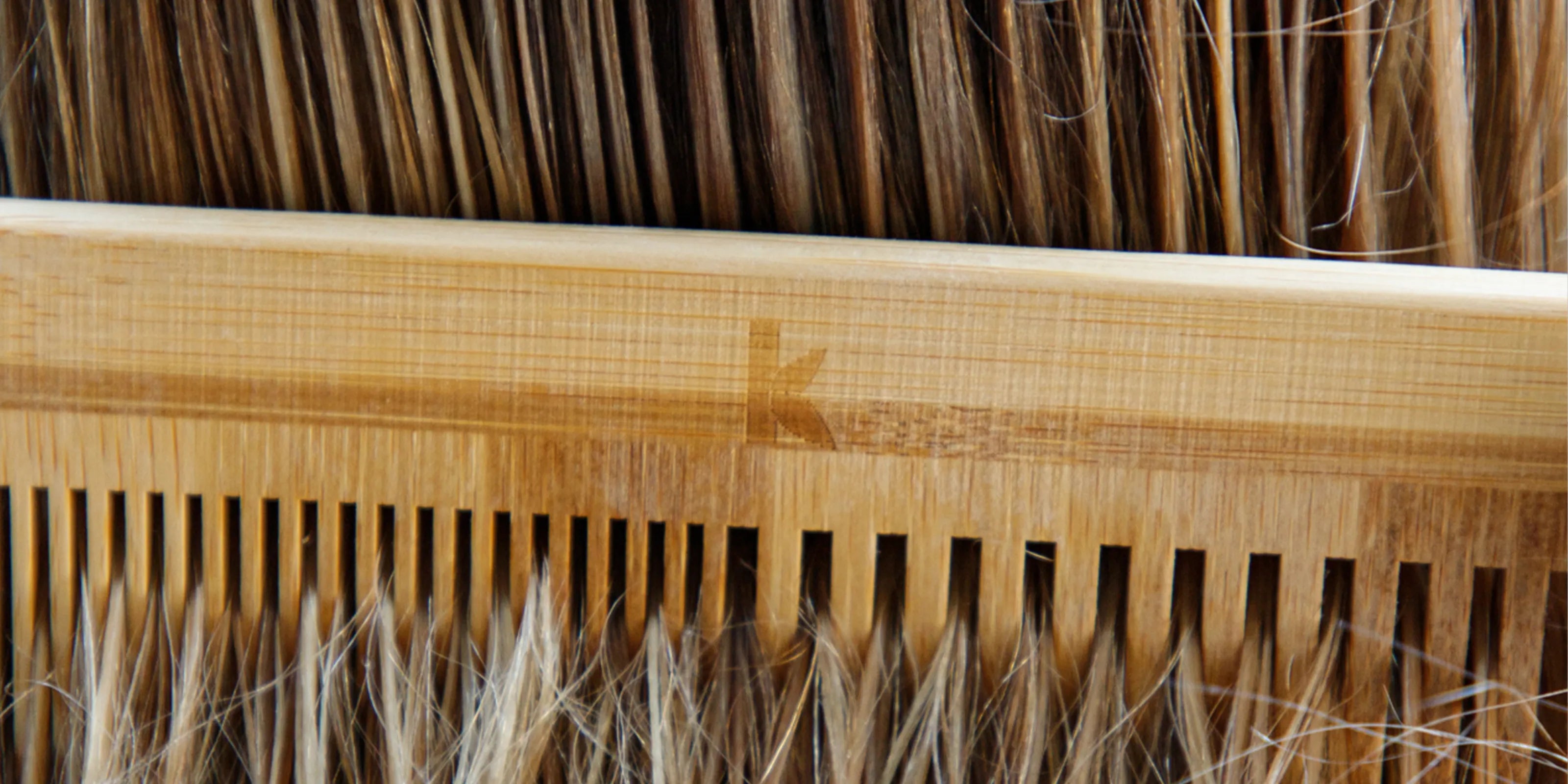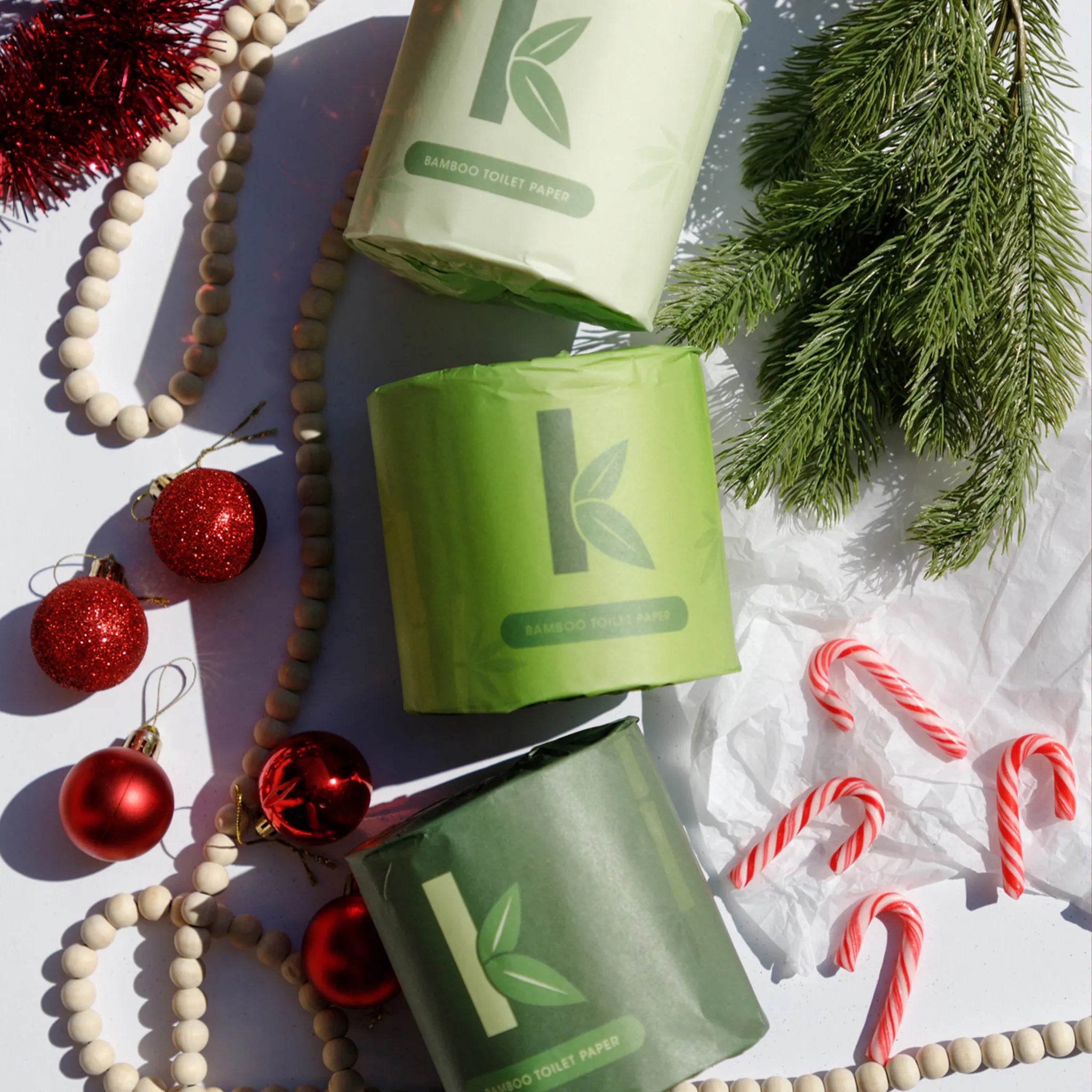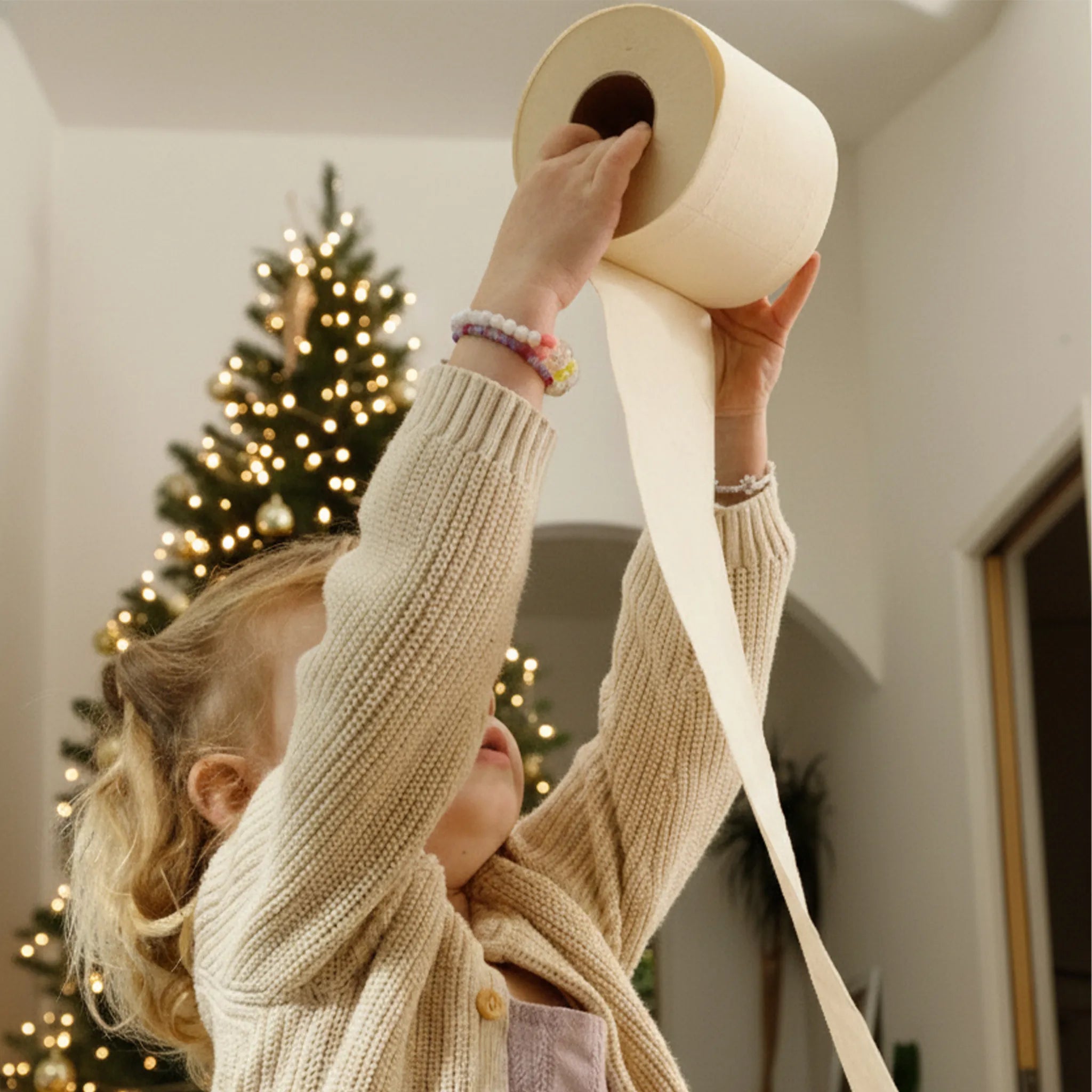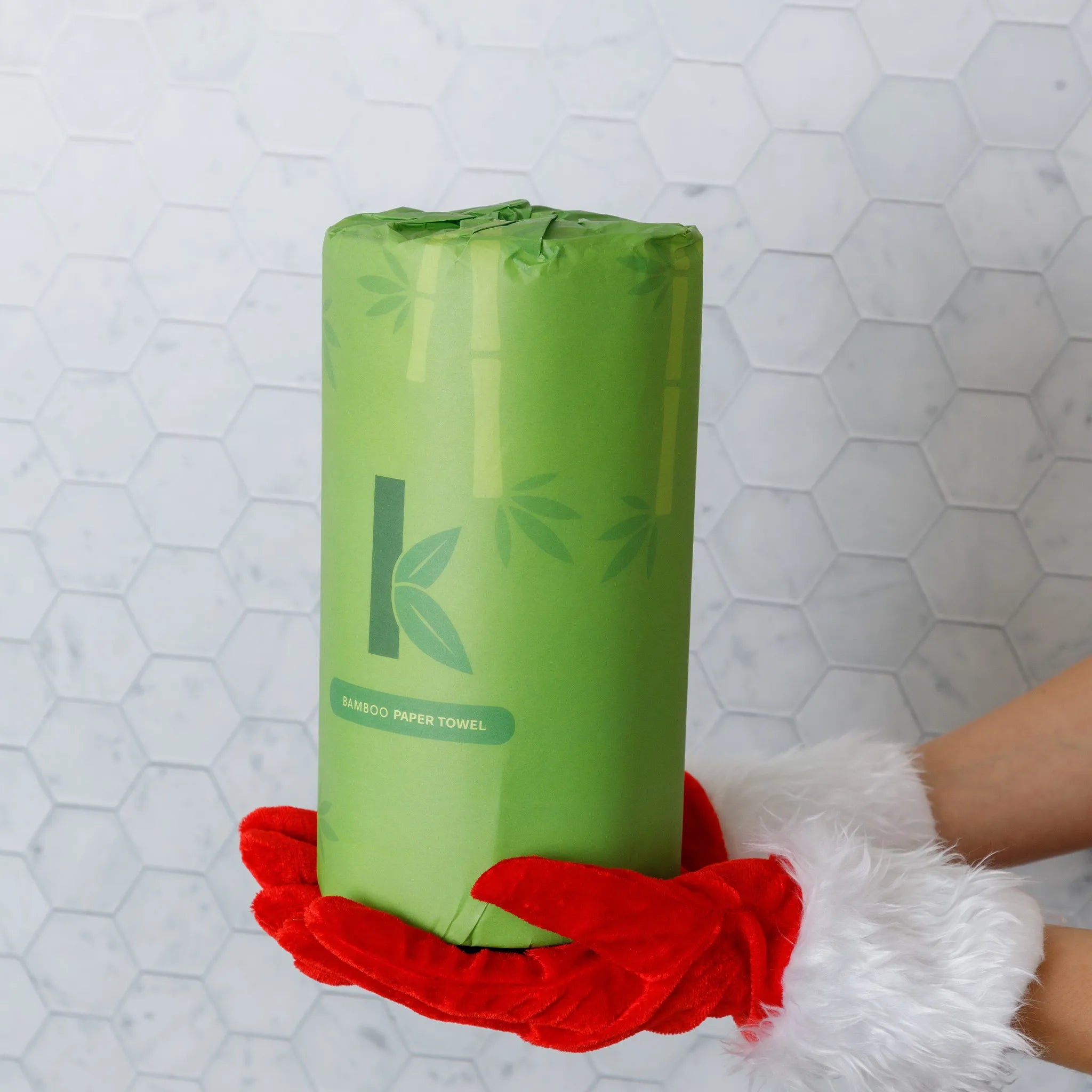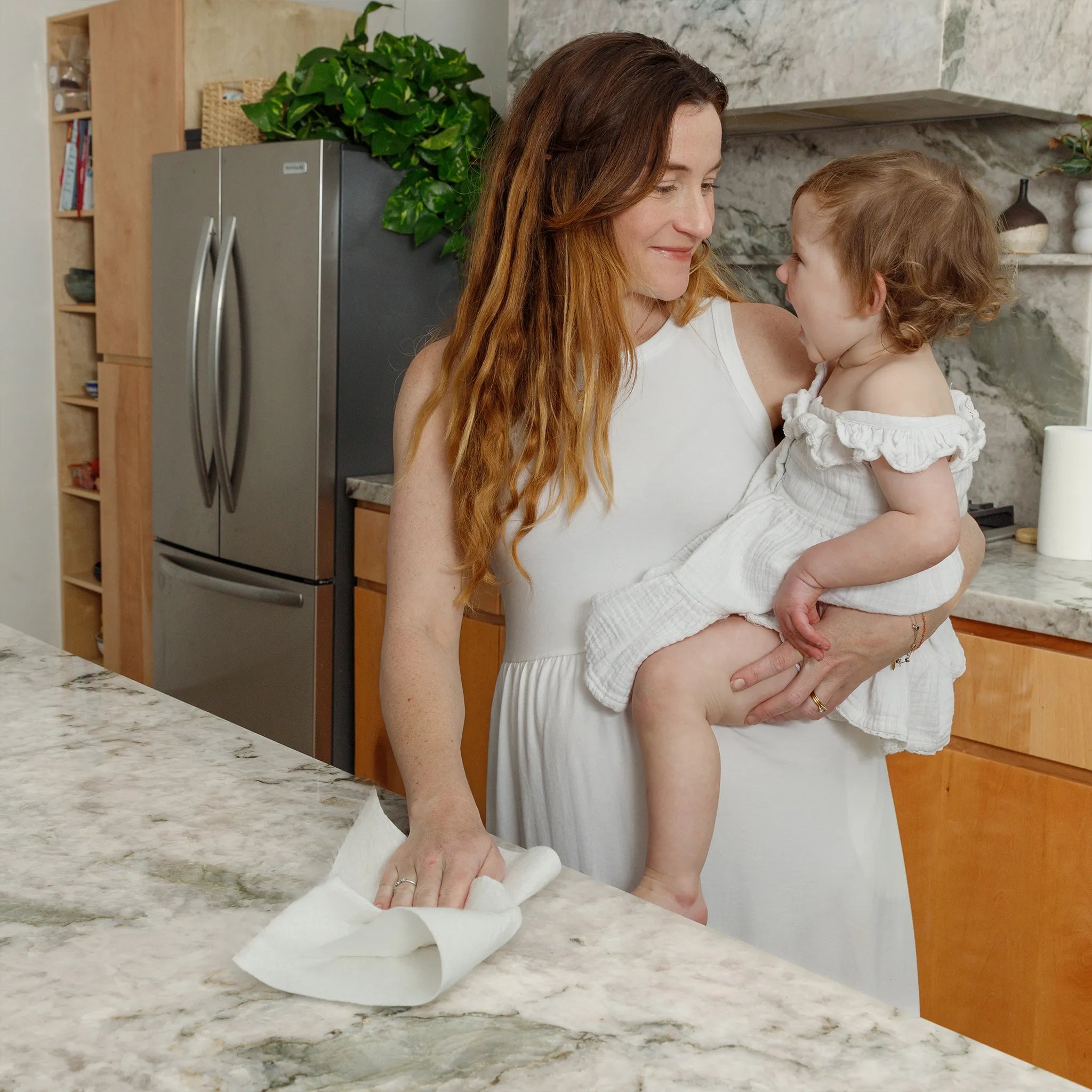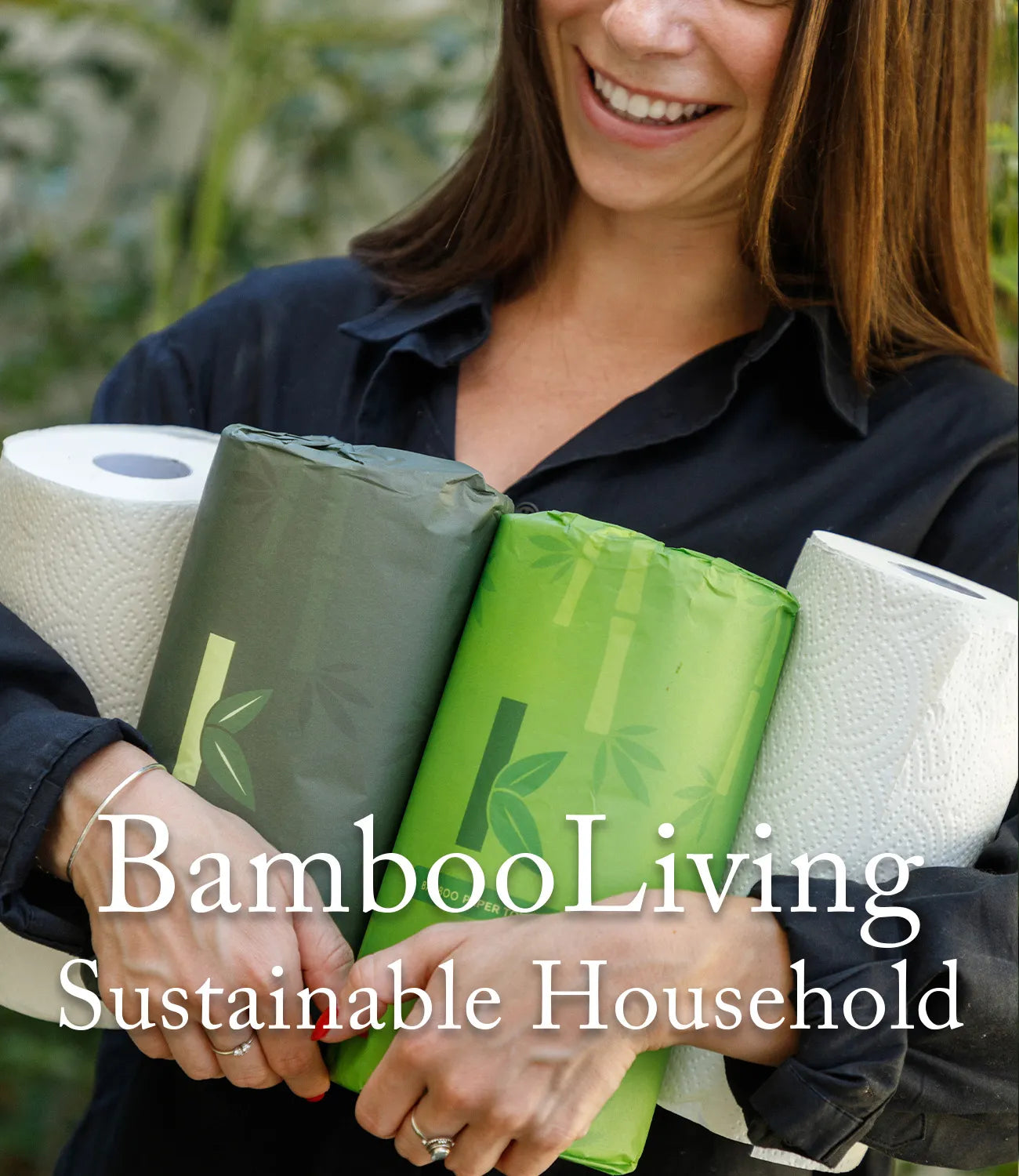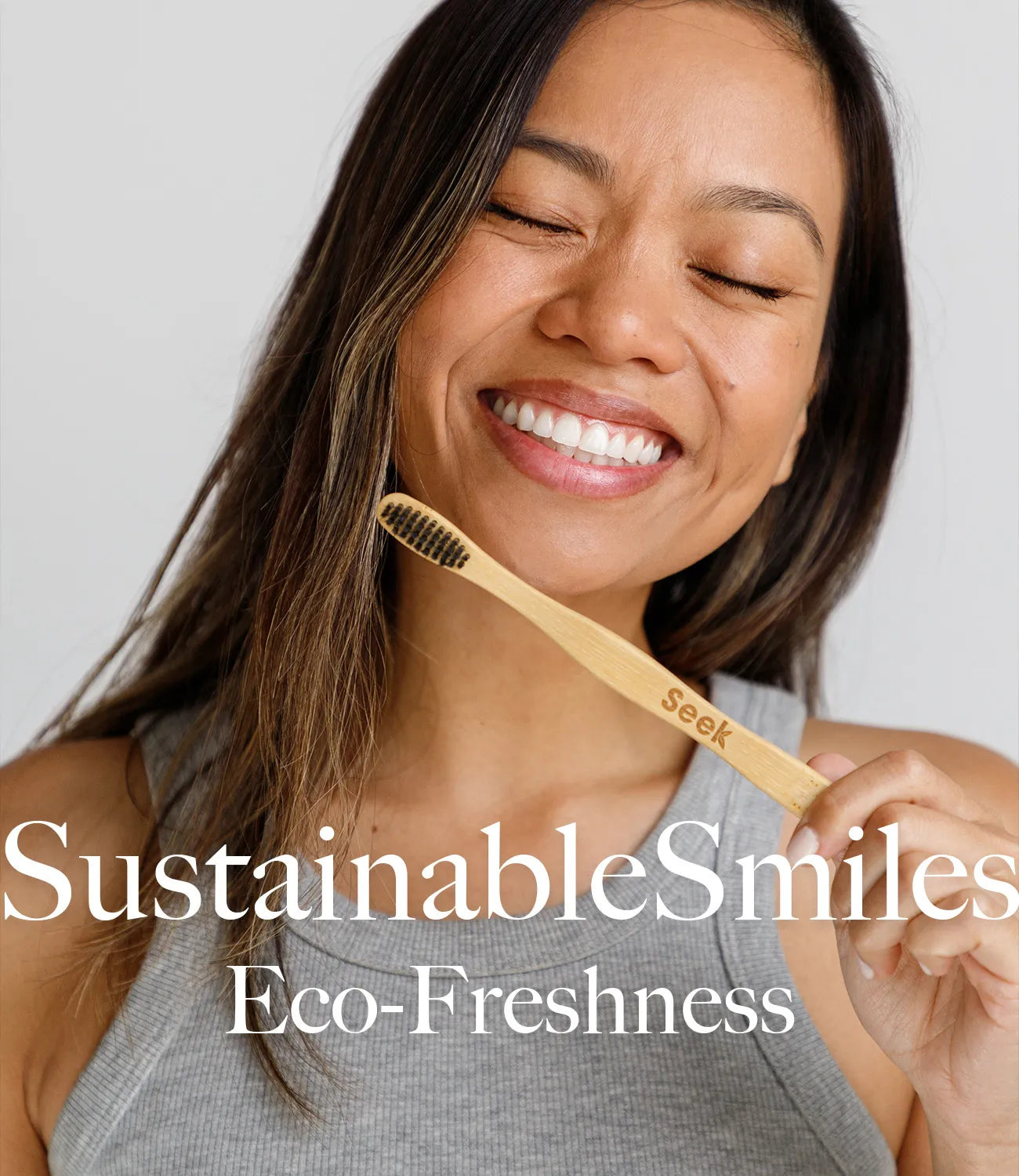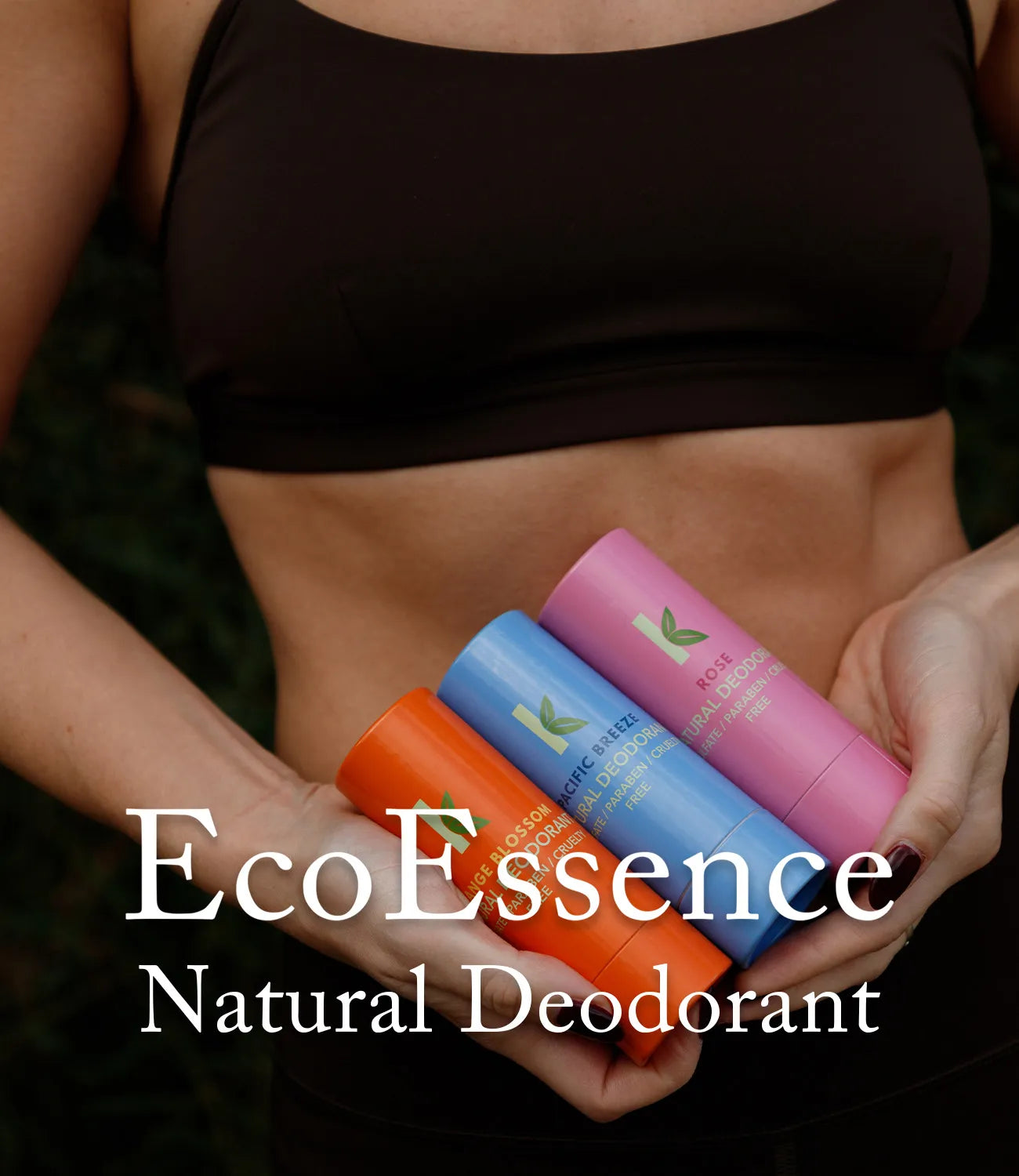What Is Zero Waste Living
Climate change, landfills overflowing with plastic waste, raging wildfires, waning animal species—even if you’re a relatively casual follower of environmental news, you’ve undoubtedly noticed that there seems to be no shortage of concerning stories recently. As scientific studies continue to reveal the negative environmental impacts of humans and plastics upon the earth, it’s become clearer that dire consequences await if we don’t find a way to make our lifestyles more sustainable. Unfortunately, most news stories about sustainability tend to focus on the environmental impact of plastic and the dangers of climate change. They offer relatively limited advice pinpointing what you can do to live a more sustainable, eco-friendly lifestyle and reduce your carbon footprint.
However, it is more than obvious that we, as humans, must take drastic steps to address our current lifestyle’s sustainability. While many solutions exist at the corporate, local, state, and federal government levels to prevent toxic runoff and reduce emissions and the use of fossil fuels and plastic, the effort cannot stop there. Instead, individual citizens like you must take the steps you can take to address personal sustainability—for most, the process involves taking an honest look at the product sustainability of the items you use every day, as well as the plastic and other waste they produce.
Why Is Individual Attention to Sustainable Products so Important?
Of course, on a planet of over 7 billion people, reducing one individual’s plastic use—or even a single household’s—can seem relatively inconsequential. However, even if you think of switching to sustainable products from their plastic counterparts as akin to altering one grain of sand on an entire beach, consider the impact millions and billions of those grains of sand can make together. Just as the movement of individual sand grains can eventually alter the shape of an entire coastline—with drastic impacts on both land and ocean—individual eco-friendly product choices can collectively help remediate the damage plastic has done to our environment and prevent more damage from occurring in the future.
In addition, individual, family, and regional trends toward more sustainable products can influence more responsible behavior from the companies that produce the things we use every day. When over half the people consider themselves eco friendly and show an interest in sustainable products and companies that produce sustainable products, the incentive to use recycled material and eco friendly raw material instead of plastic is at an all-time high. By searching for an eco label indicating an eco friendly product, purchasing sustainable products for everyday use, and avoiding products and companies that utilize plastic and high-waste-producing procedures, attention to individual sustainability can have a much larger impact than you realize.
What Are Sustainable Products?
It’s all well and good to promote the use of sustainable products—but it’s difficult to take steps toward an eco-friendly or sustainable lifestyle if you don’t know any of the specifics that make the products you choose sustainable. Worse, the term “sustainable” can have different meanings depending on who you ask. For example, a company that once produced products packaged in single-use plastics could term itself “more sustainable” as long as they’ve made at least some effort to switch to recycled plastic; however, that doesn’t mean its products are inherently sustainable.
For a product to truly be considered sustainable, its production and use cannot be harmful to the earth or its inhabitants—thus, its existence is beneficial to people and sustainable by the environment moving forward. Unfortunately, most of the products consumers use daily are not sustainable, in that they cause some sort of harm to the environment, deplete one of our nonrenewable resources, or even harm people or wildlife directly.
So, what are sustainable products? In general, a sustainable product will have these characteristics:
- The product is made using renewable resources. Unlike nonrenewable raw materials, such as fossil fuels and other minerals that are finite and will deplete over time, sustainable products utilize renewable resources. These renewable resources can be replenished over a reasonable period and used to make more products. Common renewable resources used in producing sustainable products include solar energy, hydropower, and renewable biodiesel.
- The product is made ethically and responsibly. Companies making sustainable products must also ensure that their products are sourced, developed, and produced responsibly. For example, truly sustainable companies have safeguards to protect their workforces’ health and welfare and minimize the impact of their facilities on the local plant, animal, and human populations. Also, sustainable companies take steps to ensure employee diversity, fair pay, and fair labor standards.
- The product does not harm people or the surrounding ecosystem. Perhaps most importantly, concerning the above two characteristics, sustainable products refrain from harming the earth or its inhabitants in any way. Sustainable products utilize sustainable development practices and produce relatively little waste during production compared to other products. In addition, these eco-friendly products use sustainable packaging and can be disposed of, reused, or recycled without adding excess waste volume to our landfills.
What Is Sustainable Development and Why Is It Important?
As we’ve alluded to already, there is more to sustainability than creating a product from a renewable resource or producing a product that can be recycled when its lifespan ends. Instead, it is essential to ensure the product—from conceptualization to production, distribution, and use, all the way to the end of the product’s lifespan—does not harm the environment, animals, or the people who use and produce it. This focus on sustainability aims to positively impact the environment, the society that produces and uses the product, and the overall economic outcome of all involved.
The process of ensuring sustainable development involves performing a life cycle assessment of a product, process, or other economic development project and ensuring it protects the environment and safeguards the well-being of people, plants, and animals involved. Key components of sustainable development include specific attention to three important questions:
- Is the action environmentally sustainable? Any action taken must not harm the environment. In the case of a sustainable product, as mentioned earlier, sustainable product design and sustainable product development aim to utilize renewable resources, minimize the use of fossil fuels, and produce little waste during production and use. An example of an environmentally sustainable product characteristic is recyclable or reusable packaging instead of single-use plastic.
- Is the action socially sustainable? Any action taken must help people, communities, and society achieve positive movement toward an improved quality of life. Concerning sustainable product development, companies must ensure safe conditions, equality in hiring, and more to make sure that production and use do not harm any person or group of people. A common example of socially sustainable product development involves reducing the reliance on harsh chemicals or dangerous conditions during production.
- Is the action economically sustainable? Any action taken must focus on equal opportunity for economic growth for people at all stages of the process, without sacrificing environmental health. For sustainable products, this means that production of the product helps provide economic growth for all, with a fair distribution of wages and fair compensation for people at all production stages. A prominent example of economic sustainability is the movement toward fair trade coffee (as well as other fair trade products), which adheres to international economic standards and creates a trading partnership that ensures adequate compensation for the farmers responsible for producing the world’s coffee.
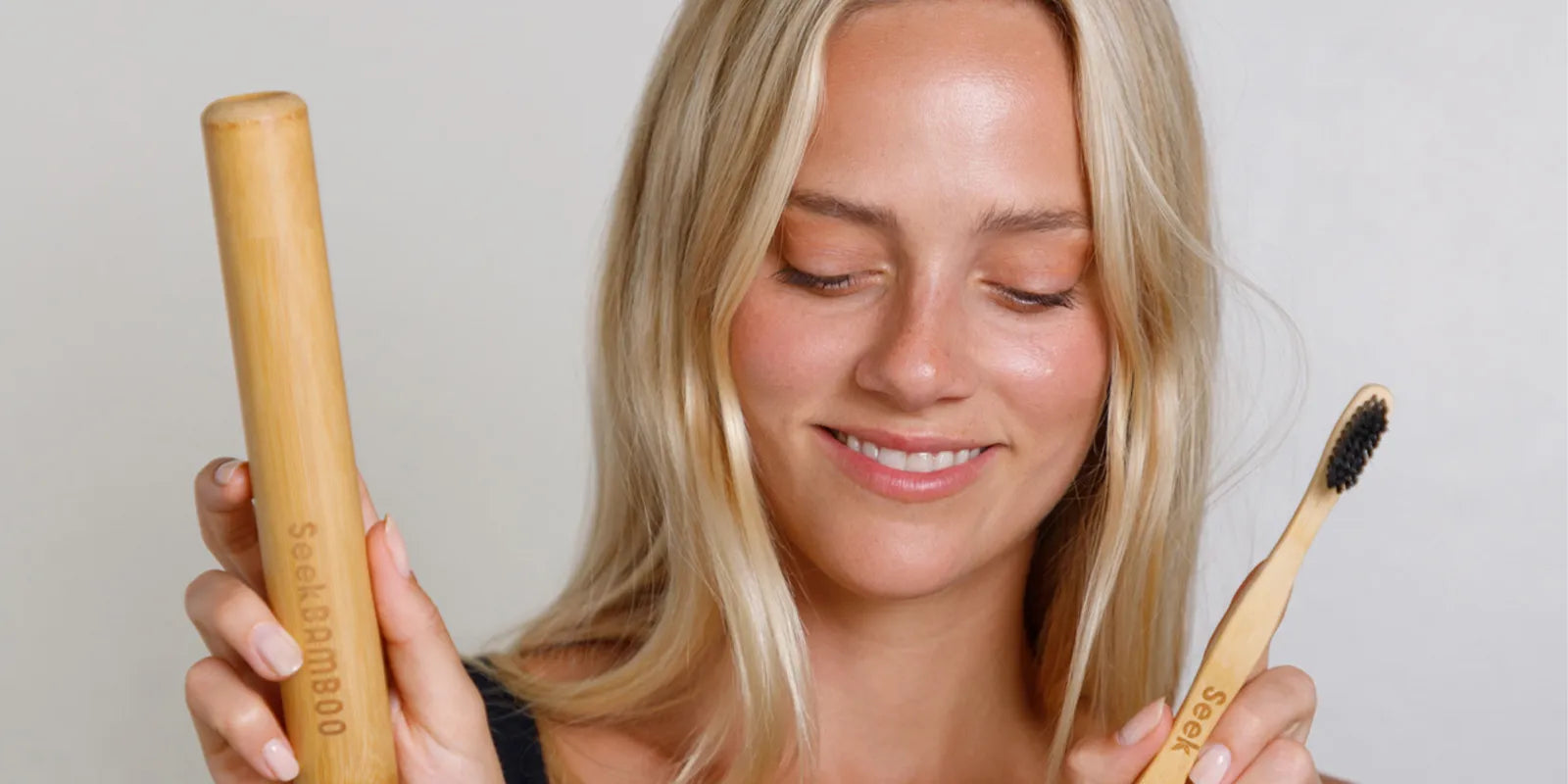
What Are Greener Products and Services? How Can You Identify Them?
In a recent consumer survey, 37% of all adults said they actively sought green products and felt they focused on sustainability while shopping for consumer products. An even larger percentage (45%) of the largest consumer demographic globally—those aged 18-34—said that product sustainability is “extremely important” when making a purchase decision. Perhaps even more significant is that these individuals are willing to pay as much as 5% higher prices to ensure that their chosen products are sustainable.
As a result, it has become a common marketing tactic to label products as “eco-friendly” or “green” and use environmentally-associated packaging with natural colors, images of trees, and the like—even if said products are only marginally green. The practice, known as “greenwashing,” serves only to boost the associated company’s bottom line and perpetuate non-sustainable products and practices. So, how can you tell if a product is truly sustainable? Look for these signs:
- Specific, evidence-based claims. Any claim made by the company on its packaging should be specific and verifiable. For example, instead of claiming to be natural or sustainable, product packaging should make a more verifiable claim, like the use of 100% renewable resources. Such a claim is often easily verified on the company’s website or within other consumer information and should be backed by evidence like statistics, research studies, and more.
- Official labels or certifications. The presence of ecolabels—a voluntary product label that signifies international or federal certification that a product is environmentally friendly—can help you identify a sustainable product. In the US, look for USDA-certified organic food products, Energy Star-efficient appliances, automobiles, and Green Seal-labeled sustainable products. These third-party organizations provide an accurate, non-biased view of the sustainability of the products in question.
- Climate Pledge Friendly labeling. Some products may also carry a climate pledge friendly label on either the product packaging or the company’s website. This distinction, offered by Amazon in partnership with other third-party organizations, recognizes that it has made some sort of stride toward sustainability. To qualify, products or the company that produces them must achieve certification from Amazon’s Compact by Design certification program or one of the above-mentioned official certifications.
- Company information. Aside from the official certifications mentioned above, many companies or individual products make other efforts to achieve sustainability. Performing your own research on the company’s website—especially within their “About Us,” “News,” or “blog” sections—could reveal additional sustainability information. In particular, look for research studies, awards, and other information regarding everything from eco-friendly packaging initiatives to fair trade practices.
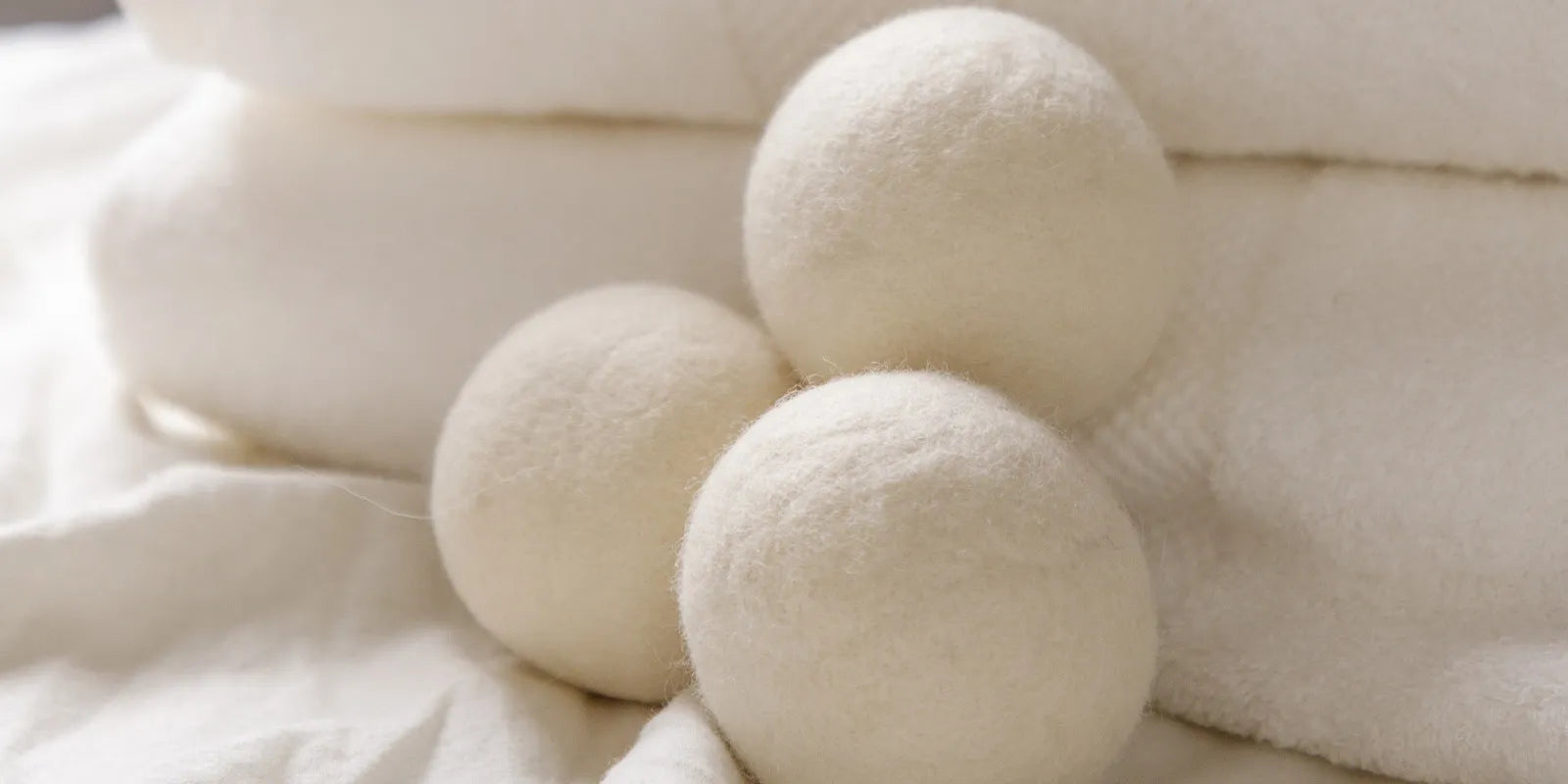
Case Study: Is This a Sustainable Product?
To help you learn to identify sustainable products, we’ve developed a very brief case study that compares a popular sustainable product with its non-sustainable counterpart. Consider wool dryer balls, a popular alternative to dryer sheets. There are some fairly specific sustainability-related claims made about wool dryer balls—especially as they compare to dryer sheets—and it is essential to check these claims before purchase. Here, we’ll list a few, as well as the proof behind each:
- Wool dryer balls are made of 100% premium New Zealand wool. This claim is fairly easy to fact-check on the company’s website. If you’re in the market for 100% premium alpaca or 100% premium organic wool, these options are available as well. In any case, unlike dryer sheets, which employ the use of cardboard packaging, cellulose sheets, and chemical coatings, wool balls have but one natural ingredient.
- Wool dryer balls reduce drying time. According to the David Suzuki Foundation, wool dryer balls reduce drying time by 30% to 50%. Arguably, that claim is made by a dryer ball retailer—though supported by a key sustainability figure—so additional research is likely necessary. While results vary depending on the contents of your dryer, the size of your load, and more, independent research has noted a 20% reduction in drying times between two loads of towels.
- Wool dryer balls promote skin health. Again, this claim is easily proven by a comparison between dryer balls and dryer sheets. The ingredients list posted on a box of dryer sheets contains several chemicals known to exacerbate skin conditions like eczema, psoriasis, and contact dermatitis, while wool dryer balls do not.
So, are wool dryer balls sustainable? As they are made from 100% wool, a renewable resource, are reusable right down to the packaging (instead of disposable cellulose and cardboard), and do not contain harmful chemicals in production or leach them into the environment, wool dryer balls can be considered sustainable. They can also reduce drying times, which reduces energy usage and limits reliance on fossil fuels.
How Do Sustainable Products Help the Environment?
While we’ve already addressed the importance of individual, corporate, and governmental attention to sustainability, it’s just as critical to learn how producing and using green products helps the environment. In general, we know that “going green” helps contribute to our environment’s health. So, what is environmental health and the critical issues related to it?
According to the Office of Disease Prevention and Health Promotion and the World Health Organization (WHO), the environment as we know it consists of external factors and behaviors that affect us, including biological factors, physical objects, and chemical substances. A focus on environmental health considers the condition of the environment and the ecosystems contained within it, and the thriving biodiversity that relies on its health. Therefore, to promote environmental health, we must either positively affect or reduce our negative effects on all components of the environment, including:
- The global environment, including the atmosphere and climate
- All other outdoor air quality
- Water quality, including surface and groundwater
- Soil and food health
- Our homes and communities
Fortunately, green products are a real way everyone on the planet—including you—can take steps toward improving environmental health.
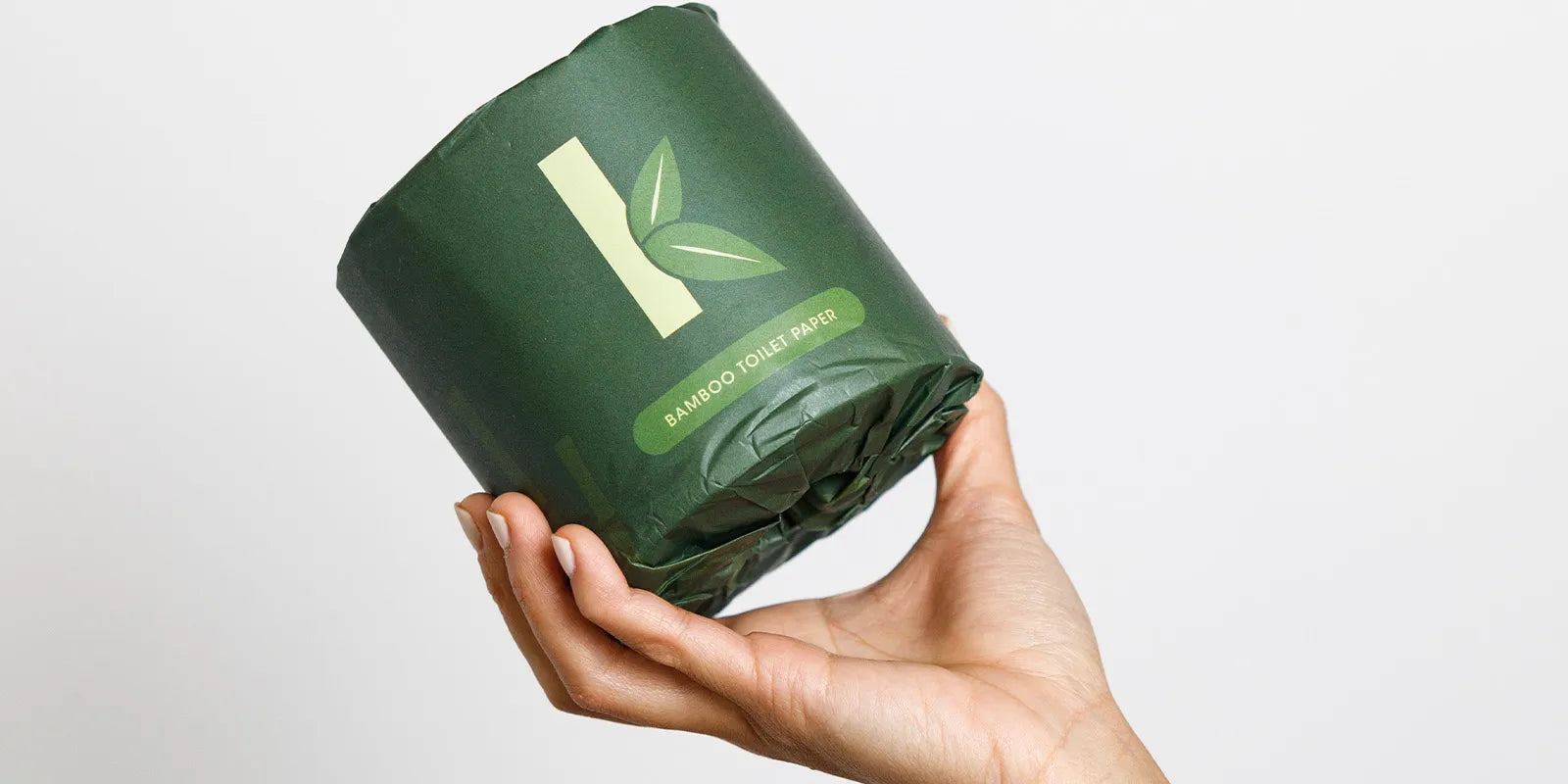
Sustainable Products Help Improve All Five Aspects of Environmental Health
So, how can you become more environmentally friendly? By searching for an ecolabel, purchasing, and using sustainable or green products, you too can address numerous aspects of environmental health. These aspects correspond to each of the environment’s components—though the actual environmental impact can vary depending on the product, supply chain, and individual company. Here’s a brief overview of how choosing environmentally friendly products stands to impact each of the five components of the environment:
- Global environment and climate change—green supply chains. Green business efforts to prioritize a green supply chain—a network of suppliers, distributors, and shippers committed to using environmentally friendly practices to reduce the carbon footprint—can help ensure that good practices flow throughout businesses from the top to the bottom of the chain. Similarly, efforts to move to a circular economy of production, use, and recycling will reuse resources instead of further depleting nonrenewable ones and reduce the overall environmental footprint.
- Outdoor air quality—reduced greenhouse gas emissions: 42% of all greenhouse gases arise from the production and transportation of goods. Minimizing the use of nonrenewable fossil fuels like coal, petroleum, gas, and oil reduces the greenhouse gases they produce, including carbon dioxide and water vapor. Other environmentally sustainable production practices reduce emissions of other gases like methane and nitrous oxide (which contribute to poor air quality and global warming) and focus on renewable energy.
- Water quality—reduced waste production. Manufacturing waste and runoff, including hazardous chemicals and biological agents, can contaminate groundwater and surface water. Green businesses reduce or eliminate this waste, improving water quality across the board. In addition, individual attention to purchasing sustainable products reduces the number of single-use plastics in our oceans. It prevents harmful chemicals from non-sustainable personal care products like shampoos, soaps, and detergents from entering rivers, streams, and groundwater.
- Soil and food health—limiting chemical leaching. Halting the use of inorganic fertilizers and other hazardous substances in production reduces the number of toxic chemicals that leach into the soil and harm both animals and plants. Meanwhile, organic farming techniques strive to do the same to protect food, raw textiles, and more. Together, these efforts help ensure our soil’s health and the people, plants, and animals who rely on it.
- Homes and communities—reusable products without hazards. Many home, cleaning, and personal care items contain chemicals that may present a personal or indoor environmental hazard for others. Crafting new, hazard-free products to replace the old can help address personal, public, and environmental health. Also, moving toward sustainable products that can be reused or recycled instead of ending up in a landfill promotes improved community health.
Companies Move Toward Sustainability
Of course, although we’ve established that individual product choices matter, the movement toward a green supply chain and a circular economy cannot be achieved by the consumer alone. We need companies that produce our most-used items to commit to more sustainable practices during production. So, what’s the state of the green supply chain?
A recent State of Supply Chain Sustainability Report from MIT conducted an anonymous survey of supply chain professionals, performed interviews of company executives, and reviewed media reports of supply chain news. The report found increased pressure from consumers, environmental groups, government entities, and the general public to move toward a green supply chain and a circular economy. As a result of this pressure over the last several years, some of the world’s largest corporations, like Nestle and McDonald’s, are taking the initiative to “go green,” and many historically green corporations, including Apple and Google, are doubling their efforts.
Sustainable Products to Switch To
Do you use sustainable materials currently? If so, you’re not as alone as you might think. According to a study published by Harvard Business Review, although many corporations are reluctant to expend the time, resources, and effort to use a green supply chain or influence a more circular economy claim that consumers are reluctant to purchase sustainable products, the opposite is true. In fact, in over 90% of consumer categories, sustainable products saw faster, more lasting growth than comparable traditional counterparts.
If you haven’t yet begun using sustainable products, we hope that the first portion of this text has adequately answered questions like “What is the importance of eco friendly products?” As we’ve demonstrated, products certified and labeled eco friendly, green, or sustainable reduce the negative impact on our environment compared to traditional products. They can show benefits to your health and well-being. Best of all, due to the pressure exerted by consumers and organizations—and the dwindling number of excuses that corporations have to avoid sustainability—the selection of sustainable products is broader than ever. Now is the best time to consider making a switch.
Increased Sustainability Versus Zero-Waste
With increased availability and an enhanced selection of sustainably produced goods, people from all walks of life can benefit from the use of a greener product. As we pointed out in the case study above, sustainable products are just as effective as their traditional counterparts, often come at a lower cost than single-use or disposable items and can save you money on your energy bills overall. For these reasons and the environmental factors listed above, many people choose to switch some of their household products to an eco friendly alternative.
Alternatively, some people choose to switch to a zero-waste lifestyle to produce absolutely zero waste. This is achieved by using only products that can be reused or repurposed. In the end, there are zero plastics and other disposable products cluttering your trash cans and making their way to already-overflowing landfills.
How Can You Switch to a Zero-Waste Lifestyle?
While switching to a zero-waste lifestyle allows you to continue to benefit from the above advantages of sustainable products, the additional environmental benefits are clear. However, there’s more to adopting a zero-waste policy than simply tossing your plastic bags. Fortunately, with the number of zero-waste and sustainable products available on the market today, your goal can be within reach with careful attention to detail, product research, and mindful purchasing.
First things first—if you already have non-sustainable products in your home, it is important to use these up first; simply tossing them without use means that the physical and financial resources that brought them to you have been for no purpose. Instead, use what you have now, and find ways to repurpose, recycle, or donate if possible. Then, as you need new products, search for a green product to replace them.
This little-by-little approach to zero-waste allows you to make conscious decisions regarding the products you choose on an individual basis. You can perform research as needed and truly feel confident in the products you purchase. Start with the most important product category for most—personal care and household items—and make small changes you can build on as you go.
How Can You Identify Greener Products?
We’ve already discussed how to identify an eco friendly or sustainable product by its ecolabel or consumer research. However, identifying green products that can be incorporated into a transition to zero-waste can be a little trickier. Don’t worry—we’re here to help. These tips can help you identify products that can help drastically reduce the waste in your home:
- Look for bulk products. Don’t let the word “bulk” turn you off—often, grocery stores, farm supply stores, and other retailers will have bulk items like grains, beans, cereals, flours, snacks, pet foods, and more you can place in your reusable containers for purchase. In addition, bulk items tend to come in larger packages—read: less packaging and shipping required. If you’ve found a favorite bamboo toothbrush, order it in bulk to reduce your environmental impact.
- Bring your own bags. Besides bringing your own bulk containers from home, you can also bring a reusable cloth or other alternative shopping bags to eliminate your reliance on single-use plastic grocery bags. Also, consider carrying reusable personal items with you to reduce your use of disposable items like plastic silverware, takeout containers, plastic water bottles, and more.
- Choose eco-friendly packaging. While it can be tricky to avoid items housed in plastic packaging, look for recycled plastic or even items such as laundry detergent in biodegradable packaging to reduce waste. Alternatively, try one of the many creatively packaged items on the market today that come in cloth pouches, wooden boxes, or glass jars that can be upcycled and used for other purposes around your home.
- Avoid harmful ingredients. When possible, purchase organic produce and other items to reduce your exposure to wasteful farming practices and harmful chemicals. Also, avoid ecologically harmful ingredients like palm oil, which is an ingredient in up to 70% of personal care products and contributes to the deforestation of vast swaths of rainforest each year.
5 of Our Favorite Sustainable Products
Whether you’re simply considering switching a few products you use frequently or adopting a zero-waste lifestyle, reducing personal waste and using products that are produced sustainably can help you lessen your negative effect on the environment. To start, we recommend assessing your personal care items. A study by Zero Waste Europe estimated that in 2018, over 120 billion units of packaging were utilized for personal care products alone. Replacing these notoriously wasteful products with sustainable ones is a great way to achieve maximum impact in a single product category.
To help you get started, we’ve compiled a list of five of our favorite products crafted from sustainable materials. We’ve chosen these starter products from three major categories—cleaning products, personal care, and lifestyle products. That way, you can begin reducing waste with products that are most comfortable for you and feel much more secure sticking with your new commitment.
Product 1—Bamboo Toothbrushes
Bamboo toothbrushes stand out as one of our favorite eco-friendly products, year over year. Our bamboo toothbrush handles are constructed of 100% bamboo pulp and are completely compostable—compare that to a plastic toothbrush that will sit in a landfill for decades to come. The standard soft bristles are guaranteed to clean your teeth just as well—or better than—any other toothbrush on the market. At the same time, the charcoal version can provide all-natural whitening without the need for caustic chemicals.
Switching to sustainably sourced, eco friendly bamboo doesn’t just prevent additional fertilizers and plastics from entering the ecosystem—it allows you to help fund a variety of ecological causes with the sale of each colored toothbrush. Best of all, there are plenty of natural toothpaste options to use along with your new toothbrush, including toothpaste tablets, tooth powder, and activated charcoal powder.
Product 2—Bamboo Bedding
One of the simplest moves you can make toward a zero-waste lifestyle is by asking yourself—“What fabric is the most eco-friendly?” and utilizing that fabric as much as possible as your current fabric products wear out. Bamboo bedding allows you to choose sustainable fashion for your bedroom crafted from 100% sustainable fabrics that outperform other eco friendly fabrics. We know you’ll find bamboo sheets much lighter and softer than organic cotton and more durable than recycled polyester. Better yet, our bamboo bedding is naturally antimicrobial and anti-static without chemical treatment.
Add a set of bamboo memory foam pillows for optimal neck and back support without the chemical off-gassing common with traditional foam items. As a bonus, both bamboo sheets and bamboo pillows are naturally breathable, allowing you to get a comfortable night’s sleep at the perfect temperature.
Product 3—Zero-Waste Dish Washing Block
If you’re accustomed to washing dishes with shelf-stable liquid dish soap full of preservatives, pumped from a plastic bottle, you’re in for a pleasant surprise. Our palm oil-free dish soap bar with sustainable, plastic-free packaging is an ideal solution for households switching to a zero-waste lifestyle. Better yet, this large-sized block lasts much longer than the average bottle of dish soap and contains naturally soothing ingredients to keep your hands soft.
Our vegan dishwashing block is great for more than just dishes—it can be used for several household and kitchen cleaning chores, including laundry, carpet cleaning, general household cleanup, and more. With various uses and zero-waste packaging, a dishwashing block is the perfect starting point to begin a zero-waste lifestyle.
Product 4—Bamboo Makeup Remover Pads
Pre-treated wipes and cotton-plastic pads soaked with chemicals, including makeup remover wipes, are not only harmful to your skin, but they’re also bad for the environment. Standard wipes contribute to sewer and waterway blockages and typically come packaged in foil-lined plastic packets that cannot be recycled. By contrast, bamboo makeup remover pads are soft, sustainable, and 100% chemical-free; use with any eco-friendly, gentle bar cleanser.
Perhaps the best feature of our bamboo makeup remover pads is that they are reusable—toss in the wash and use repeatedly for daily waste-free makeup removal. Store in a reusable container of your choice for the ultimate in waste-free beauty.
Product 5—Bamboo Straws
What is the most sustainable product? For us, it’s our sustainable bamboo straws. These straws are made with super-premium bamboo shoots for added durability—if you treat them right, they can add a touch of sophistication to your cocktails for years to come. While we also offer other types of sustainable and eco-friendly straws, we prefer bamboo for its long life and superior temperature control—especially for hot drinks.
In addition, bamboo does not retain the flavor of your drinks after washing and—unlike plastic—does not add its own artificial aftertaste. Best of all, bamboo straws don’t add mountains of plastic or paper waste to our landfills and are even compostable once they have reached the end of their lifespan.
Ready to Get Started?
We’ve designed this comprehensive guide to sustainable household products to help you not only make better decisions regarding the sustainability of the products you use but truly develop an understanding of why eco friendly practices matter. Now, it’s time to apply your new knowledge to your own real-world purchasing decisions. Whether you’re transitioning to a zero-waste lifestyle or simply want to live more sustainably, you can find a broad selection of beautiful, durable, sustainable zero-waste products at Seek Bamboo. Try out a few of those we’ve listed to see if they’re right for you or choose a Zero-Waste Starter Kit for the ideal beginning to your new lifestyle. No matter which you choose, we look forward to hearing about your progress toward zero waste—contact Seek Bamboo today and tell us your story!
Zero-Waste Bathroom Essentials

As we near the end of our journey through sustainable living, let's highlight the transformation of our bathrooms into zero-waste sanctuaries. This isn't just about the products we use; it's about embracing a philosophy where every item is chosen with both personal health and environmental impact in mind. In our zero-waste bathrooms, traditional products are replaced with eco-conscious alternatives that reflect our commitment to the planet.
Shampoo bars and conditioner bars stand as symbols of this change, eliminating the need for plastic bottles and reducing our carbon footprint. Natural soaps follow suit, bringing organic and chemical-free cleansing into our daily routines. And let's not overlook the humble bamboo hair brush, a small yet significant swap from plastic, aligning our grooming practices with our eco-values.
Shampoo Bars
Shampoo bars are a quintessential element in the quest for a zero-waste bathroom. Their role in reducing waste and environmental impact is significant and multifaceted. Unlike traditional liquid shampoos that come in plastic bottles, shampoo bars are often packaged in minimal, biodegradable materials or even sold package-free. This shift from plastic-heavy packaging to more sustainable options plays a crucial role in cutting down the plastic waste that often ends up in landfills and oceans.
Moreover, shampoo bars are typically more concentrated than their liquid counterparts. A single bar can last as long as two to three bottles of liquid shampoo, depending on usage. This not only means less frequent purchases and reduced packaging waste but also a lower carbon footprint due to decreased transportation weight and volume.
The composition of shampoo bars often leans towards natural and organic ingredients, free from harsh chemicals like sulfates and parabens. This shift towards gentler ingredients is not only beneficial for our hair and scalp but also reduces the chemical runoff into water systems, further aligning our bathroom routines with eco-friendly practices.
Incorporating shampoo bars into our daily hygiene routines is more than just a personal choice; it's a statement of our commitment to a healthier planet. By choosing these bars, we actively participate in reducing waste, minimizing our environmental impact, and supporting sustainable practices. They represent a small but powerful tool in our journey towards a zero-waste lifestyle, proving that every step, no matter how small, counts in our collective effort to preserve our planet.
Conditioner Bars
Conditioner bars play an equally vital role in our zero-waste bathroom endeavors, complementing shampoo bars in both function and environmental philosophy. These solid bars are a testament to how small changes in our daily routines can contribute significantly to a more sustainable lifestyle.
Like shampoo bars, conditioner bars typically come with minimal or no packaging, significantly reducing the reliance on plastic. This is a crucial step in diminishing the stream of plastic waste that burdens our landfills and oceans. The absence of plastic bottles in our shower caddies isn't just visually pleasing; it's a step towards a cleaner, more sustainable planet.
In terms of longevity, conditioner bars are known for their efficiency. A single bar can outlast several bottles of traditional liquid conditioner, reducing both production and consumption footprints. This efficiency translates into fewer purchases, less packaging, and a reduction in the environmental impact associated with production and transportation.
The ingredients in conditioner bars often mirror the eco-conscious approach seen in shampoo bars. They usually contain natural oils and butters, avoiding harsh chemicals. This shift ensures that the runoff from our hair care is more environmentally benign, a small yet significant contribution to protecting water quality and aquatic ecosystems.
Embracing conditioner bars in our daily hair care routines symbolizes a deeper commitment to environmental stewardship. It's about making conscious choices that align with a zero-waste philosophy, demonstrating that luxury and sustainability can coexist. Through these bars, we take another stride in our journey towards a sustainable lifestyle, proving that every choice, no matter how small, can make a positive impact on our planet.
Natural Soap
Natural soap is a cornerstone in crafting a zero-waste bathroom, embodying the principles of simplicity and sustainability. Its role in reducing environmental impact is both direct and profound, making it an essential player in our eco-friendly routines.
One of the most significant advantages of natural soap is its packaging. Often wrapped in paper or sold package-free, it drastically cuts down on the plastic waste associated with traditional liquid soaps and body washes. This reduction in plastic use is a critical step towards mitigating the plastic pollution crisis, helping to preserve our ecosystems and reduce our collective environmental footprint.
Natural soap's composition is another key aspect of its eco-friendliness. Made with organic, biodegradable ingredients, these soaps eschew the harsh chemicals found in many commercial products. This means that the water we wash down our drains carries fewer pollutants, making a small but meaningful contribution to protecting our waterways and aquatic life.
In terms of efficiency and waste reduction, natural soaps shine. They tend to last longer than liquid soaps, meaning less frequent purchases and less packaging waste over time. This efficiency not only promotes a minimalist approach to consumption but also aligns with the principles of a zero-waste lifestyle.
Incorporating natural soap into our daily hygiene practices goes beyond personal benefit. It's a conscious choice that reflects our commitment to a sustainable future. By opting for natural soaps, we make a statement about the kind of world we want to live in—one where every product and practice is in harmony with the environment. Natural soap, in its pure and simple form, is a beacon of this sustainable journey, guiding us towards a lifestyle that values the health of our planet as much as our own.
Bamboo Brush
The bamboo hairbrush is a standout feature in the zero-waste bathroom, epitomizing an eco-friendly approach to everyday grooming. Its significance in reducing environmental impact is notable, making it a key element in sustainable personal care.
One of the primary eco-friendly attributes of a bamboo hairbrush is its material. Bamboo, a highly renewable and biodegradable resource, offers a stark contrast to the plastic used in conventional hairbrushes. The use of bamboo significantly lowers the ecological footprint of these brushes, from production to disposal. By choosing bamboo, we're supporting more sustainable practices in product manufacturing, moving away from petroleum-based plastics that contribute to environmental degradation.
Bamboo hairbrushes also bring a touch of natural elegance to our daily routines. They are often designed ergonomically and aesthetically, marrying form and function. Unlike plastic brushes, bamboo brushes are typically more durable, ensuring a longer lifespan and, consequently, less frequent replacements. This longevity aligns with the zero-waste philosophy of reducing consumption and waste.
Moreover, bamboo hairbrushes are often gentler on hair and scalp. They help distribute natural oils throughout the hair, enhancing hair health and reducing the need for synthetic styling products. This not only benefits our personal health but also decreases the chemical load we wash into our water systems.
Integrating a bamboo hairbrush into our personal care routine is a small but meaningful step towards sustainability. It's a choice that reflects our commitment to reducing waste and opting for natural, renewable resources. In the broader context of a zero-waste lifestyle, the bamboo hairbrush stands as a symbol of how every aspect of our daily lives can be reimagined to be more in tune with the environment. It's a testament to the philosophy that sustainable living can be stylish, effective, and kind to the planet.
Bamboo Toilet Paper
Bamboo toilet paper holds a special place in the zero-waste bathroom, representing a practical and sustainable alternative to traditional toilet paper. Its role in reducing environmental impact is significant, addressing one of the most commonplace yet overlooked aspects of our daily routines.
The primary eco-friendly feature of bamboo toilet paper is its source material. Bamboo, known for its rapid growth and sustainability, is a more renewable resource compared to the trees traditionally used for paper production. This fast regrowth rate means bamboo can be harvested more frequently without causing deforestation or habitat destruction, making it a much more environmentally responsible choice.
In addition to its sustainable sourcing, bamboo toilet paper often comes with reduced packaging waste. Many brands opt for plastic-free packaging, using recycled or recyclable materials instead. This commitment to minimal packaging is in direct alignment with the zero-waste goal of cutting down on single-use plastics that contribute to landfill and ocean pollution.
Bamboo toilet paper's manufacturing process is generally more eco-friendly as well. It typically requires less water and fewer chemicals to produce than conventional toilet paper. This reduced environmental toll extends beyond the product's creation, as the resulting product is also biodegradable, ensuring that its disposal doesn't harm the ecosystem.
Choosing bamboo toilet paper is more than a mere switch in products; it's an active step towards a more sustainable lifestyle. It reflects a conscious decision to prioritize eco-friendly products in every aspect of our lives, including those as routine as toilet paper. By incorporating bamboo toilet paper into our bathrooms, we're not only contributing to the preservation of our forests but also advocating for a cleaner, greener approach to everyday living. It's a small change with a big impact, showcasing that sustainable choices can be made even in the most private corners of our homes.
Safety Razor
A women's safety razor is an essential element in crafting a zero-waste bathroom, epitomizing a sustainable approach to personal care. Its role in reducing environmental impact is substantial, offering a greener alternative to the ubiquitous disposable razors.
The most striking eco-friendly feature of a women's safety razor is its durability and reusability. Unlike disposable plastic razors that contribute to landfill waste after a few uses, safety razors are designed to last for years, even decades. Made typically from high-quality stainless steel, these razors embody the zero-waste ethos of investing in long-lasting products.
Furthermore, the blades of safety razors are replaceable and recyclable. This means that instead of discarding the entire razor, only the blade needs to be replaced, significantly reducing waste. The blades, being metal, can often be recycled, further minimizing environmental impact.
The use of a safety razor also contributes to a reduction in plastic pollution. Since these razors and their blades don't require plastic packaging or components, their adoption helps lessen the demand for single-use plastics, a major source of environmental concern globally.
In terms of personal health and safety, women's safety razors offer a clean, close shave and are often kinder to the skin. With proper technique, they can reduce the occurrence of ingrown hairs and skin irritation, often associated with disposable razors.
Adopting a safety razor into a woman's grooming routine is not just a nod to environmental responsibility; it's a step towards embracing a more mindful and sustainable lifestyle. It reflects a conscious decision to prioritize eco-friendly and effective alternatives in everyday habits. In the broader narrative of a zero-waste journey, the safety razor stands as a testament to how we can make significant environmental changes through thoughtful choices in even the most personal aspects of our lives.
These changes, while seemingly small, represent a larger shift towards a more mindful way of living. By transforming our bathrooms into zero-waste spaces, we're not just reducing waste; we're actively participating in a movement that values sustainability, simplicity, and the health of our planet. It's a step towards a future where every aspect of our lives contributes to a healthier, more sustainable world.
Zero Waste Living Decoded
Your Guide to Zero Waste Living
What Exactly is a Zero Waste Lifestyle?
Zero waste is a philosophy that encourages the redesign of resource life cycles, so all products are reused, and no trash is sent to landfills or incinerators. It focuses on rethinking how we consume and manage our resources, aiming for sustainable, circular practices where everything has a place and purpose in a continuous cycle.
How Do I Start a Zero Waste Lifestyle?
Begin by assessing your current waste and identifying areas for improvement. Start with easy swaps like reusable bags, water bottles, and containers. Focus on reducing, reusing, and recycling. Remember, it’s a gradual process – focus on making one change at a time.
Is Zero Waste Costly?
Initially, it might seem costly to purchase items like reusable containers or eco-friendly products. However, in the long run, it saves money as you buy less, waste less, and invest in durable goods. Also, many zero-waste practices, like composting or choosing to buy in bulk, can actually reduce expenses.
How Can I Reduce Waste in the Kitchen?
Opt for bulk buying to reduce packaging waste. Use reusable containers for storage. Compost organic waste. Choose eco-friendly materials like bamboo or silicone instead of plastic. Plan meals to minimize food waste and reuse leftovers creatively.
What Are Zero Waste Alternatives for Personal Care?
Look for products with minimal or biodegradable packaging. Consider shampoo bars, soap bars, bamboo toothbrushes, and homemade personal care products. Menstrual cups and cloth pads are sustainable alternatives for menstrual products.
Can I Maintain a Zero Waste Lifestyle with Children?
Absolutely! It involves teaching children about sustainability and making eco-friendly choices. Use cloth diapers, encourage second-hand toys and clothes, and involve them in zero-waste activities like gardening or crafting with recycled materials.
How Do I Handle Gifts and Holidays in a Zero Waste Way?
For gifts, consider experiences, donations, or homemade items. Use recyclable or reusable wrapping materials. During holidays, opt for natural decorations and avoid single-use items. Embrace traditions that celebrate togetherness and mindfulness over materialism.
Is It Possible to Be Completely Zero Waste?
While achieving absolute zero waste is challenging, especially in our current consumer culture, the goal is to minimize waste as much as possible. It's more about the journey and the intent behind each choice than achieving perfection.
How Can I Stay Zero Waste When Eating Out or Traveling?
Carry a zero-waste kit with essentials like a reusable water bottle, cutlery, and a container for leftovers. Choose restaurants that use real plates and utensils. When traveling, pick accommodations committed to sustainability and explore local markets for unpackaged food.
How Does Zero Waste Impact the Environment?
A zero-waste lifestyle significantly reduces your carbon footprint, conserves natural resources, and reduces pollution. It helps combat climate change and contributes to a healthier planet by reducing the demand for new resources and minimizing waste in landfills.



